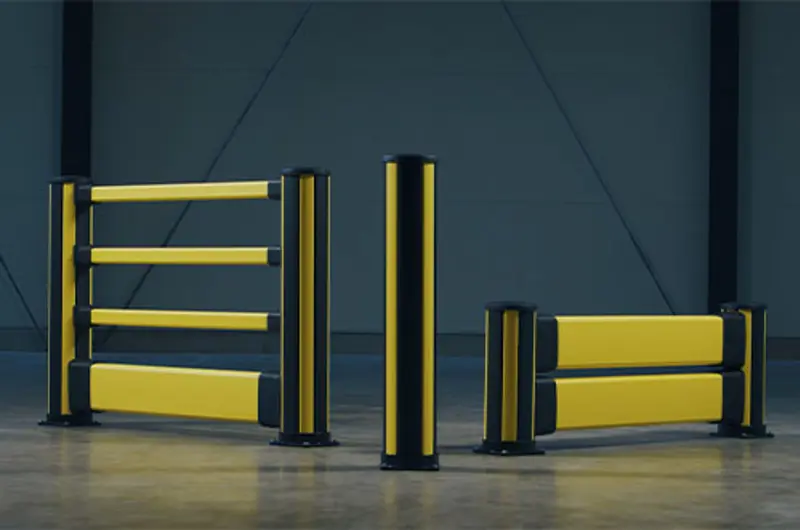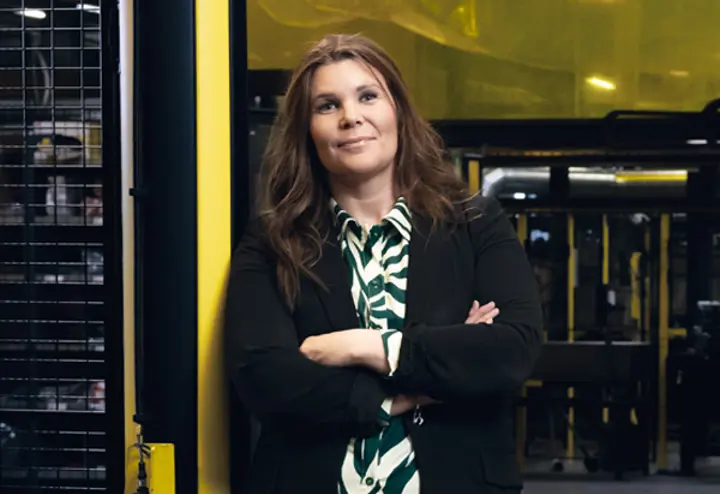In industrial settings, machinery plays a vital role in driving productivity. However, machines also pose inherent risks–dangerous moving parts, electrical hazards, ejected debris, and more. Machine safeguarding is the safety practice of strategically shielding these danger zones to protect workers.
The purpose of machine guarding is multifaceted: preventing injuries, ensuring regulatory compliance, and promoting a safer, more efficient work environment.
Types of Machine Guarding
Machine guarding solutions vary based on the specific hazards and operation of the machinery. Here are the main types:
- Fixed guards: Permanently secured barriers that require specialized tools for removal. Ideal for fully enclosed hazards.
- Adjustable spacers: Offer flexibility to handle different material sizes while maintaining a secure barrier.
- Interlocked doors: Connected to the machine's power, these automatically stop operation when the guard is opened or removed.
- Cutting kits: These are kits that allow you to cut a standard machine guard panel to your required size on site.
Implementing the appropriate type of machine guard for each specific application is essential for ensuring optimal safety in the workplace.
For more information, check out our blog on understanding the different types of machine guards.
Purposes and Benefits of Machine Guarding
Machine guarding serves several critical purposes in industrial workplaces, offering benefits that extend from protecting workers to boosting operational efficiency.
Here's a closer look at the key reasons why machine guarding is essential:
- Preventing access to dangerous moving parts: Guards create a physical barrier, minimizing the risk of workers being caught in rotating parts, gears, or other moving components that could cause serious injuries.
- Protecting workers from hazards: Guards shield workers from flying debris, sparks, excessive noise, and extreme temperatures, reducing the risk of eye injuries, burns, and hearing loss. A workplace where workers feel protected improves morale, job satisfaction, and a greater sense of trust.
- Ensuring compliance with safety regulations and standards: Proper machine guarding helps organizations meet the requirements set by OSHA (Occupational Safety and Health Administration) and other regulatory bodies.
- Improved productivity and efficiency: Fewer accidents translate into less downtime, allowing for uninterrupted production flow and higher overall efficiency.
- Lower costs associated with accidents and downtime: Effective machine guarding reduces the significant financial costs associated with workplace injuries, workers' compensation claims, and lost productivity.
Machine guarding is a cornerstone of industrial safety, safeguarding workers while simultaneously offering tangible benefits to operational efficiency and compliance.
Hazards Addressed by Machine Guarding
Machine guarding is designed to address a wide range of hazards associated with industrial machinery:
- Mechanical hazards: These include crushing, shearing, cutting, and entanglement risks posed by moving parts such as gears, sprockets, and chains, which can be particularly dangerous when workers wear loose clothing.
- Electrical hazards: Guards can protect workers from electrical shock and electrocution by preventing access to live electrical components.
- Thermal hazards: Hot surfaces and materials can cause severe burns, and machine guards help shield workers from these hazards.
- Ergonomic hazards: Repetitive motions and awkward postures required to operate machinery can cause musculoskeletal disorders, and guards can be designed to promote better ergonomics.
Appropriate safeguarding methods and well-designed machine safeguards are essential for addressing these diverse hazards and protecting workers from the potential dangers associated with industrial machinery.
Machine Guarding Best Practices
To maximize the effectiveness of machine guarding, it is essential to follow these best practices:
- Design machine guards specific to each application, considering factors such as machine type, operation, and maintenance requirements.
- Integrate machine guarding into the overall industrial safety program, ensuring it aligns with other safety measures and protocols.
- Implement secondary safeguarding methods, such as two-hand controls, pressure-sensitive mats, and light curtains, to provide additional layers of protection and reduce the risk of accidents.
- Encourage worker participation and feedback in developing and implementing machine guarding solutions to foster a strong safety culture.
- Stay up-to-date with the latest safety technologies and regulations and continuously evaluate and improve machine guarding practices.
Adhering to these best practices helps ensure that machine guarding solutions are effective, reliable, and well-integrated into the overall safety program.
Read our blog on essential machine guarding safety tips for additional information.
Axelent: Your Trusted Partner in Machine Safeguarding
Founded in Sweden, Axelent is a global group of companies specializing in machine safety and smart solutions for secure and efficient industrial environments, warehouses, storage facilities, and wire tray systems. With a strong focus on speed, safety, service, and innovative products, Axelent has been dedicated to ensuring the safety of workers since 1990.
Under the X-Guard brand, Axelent offers a flexible and comprehensive machine guarding system that meets the latest demands of the Machine Directive for permanent guards.
X-Guard is designed to cover all possible machine guarding needs, featuring:
- Standard components and accessories for versatile configurations
- Flexible design that ensures compliance with safety requirements and legislation
- Modular system with quick click-fitting for rapid installation, dismantling, and customization
- Compatibility with cable trays and impact protection solutions for maximum safety
Axelent's X-Guard system stands out from competitors by offering superior quality, faster delivery times, and highly modular solutions that can be quickly customized to meet clients' specific needs, all while ensuring compliance with safety requirements and legislation.
Please contact us today to learn more about how Axelent's machine guarding solutions can help protect your workers and ensure compliance with industry standards.
Frequently Asked Questions
What are the most common types of machine guards?
The most common types of machine guards are steel wire mesh, clear plastic, and full sheet metal panels. Each type offers unique benefits and is suited for specific applications, depending on the machine type and the nature of the hazard.
How do machine guards prevent accidents and injuries?
Machine guards prevent accidents and injuries by creating a physical barrier between workers and dangerous moving parts, such as rotating shafts, gears, and blades. These barriers help prevent entanglement, crushing, and amputation injuries and shield workers from flying debris, sparks, and excessive noise.
How can administrative controls support machine guarding efforts?
Administrative controls, such as training programs, safety procedures, and warning signs, can support machine guarding efforts by raising worker awareness of hazards and promoting safe work practices. These controls should be used in conjunction with physical guards and other safeguarding devices to create a comprehensive safety solution.







